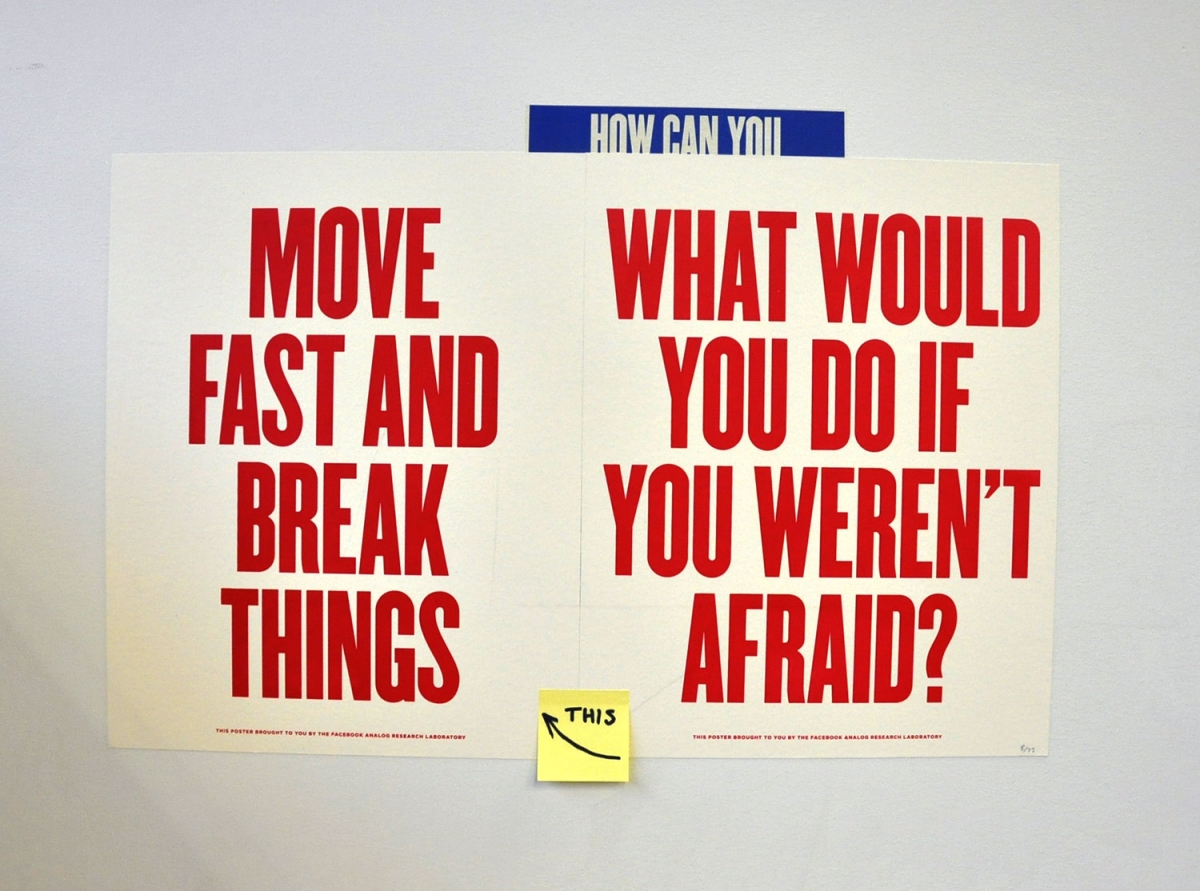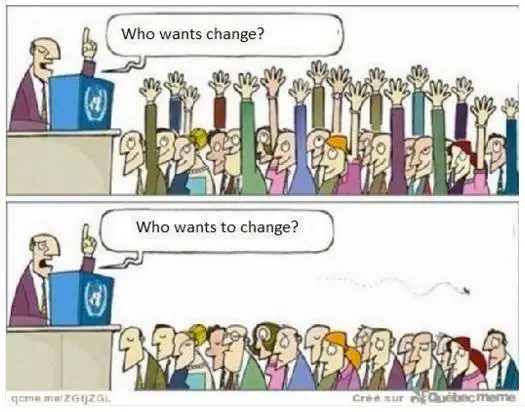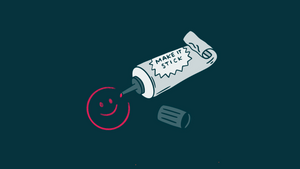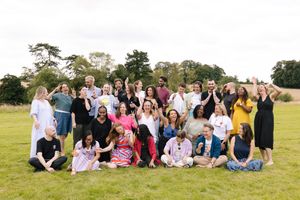4 of our inbuilt biases that get in the way of innovation and what to do about it

In our work as Behavioural Innovation practitioners, we have witnessed innovation evolve into a science with its own dedicated academic papers, an established industry in its own right projected to be worth $1.5bn this year. Decades of working with corporates, governments, startups, have shown us that typically teams take the approach that if I do X in this way, I’ll innovate. But the truth is innovation is hard. It is not linear. It’s affected by the world around it and it happens in complex systems. And it’s all done by we humans who are by our very nature, irrational, imperfect and emotional beings.
Have you ever eaten a particular food even though you know it’s bad for you? I think we can all say we’ve done that at some point in our lives. Even though our rational brain knows it’s wrong, we are readily able to override logic and reason, especially when there is a delicious [insert your favourite food, mmm cake…🤤] in front of us. We are all predictably irrational.
Innovation requires us to try many, many ideas that aren’t going to work before we hit on one that does (evidence shows us quantity of ideas is directly linked to eventual quality of outcome). But even though we know failure is a core part of innovation, the reality is failure is tough.
We’ve all seen the signs saying ‘move fast and break things’ but we don’t talk about the fact that the person who breaks things may have shattered their reputation in the process or lost the trust of the teams and funders they persuaded to back them.
We don’t talk about how the person’s willingness and ability to ‘break things’ is often predicated on safety nets, fallback plans and privilege.

We also forget that human behaviour is impacted by context. We can shape behaviours by shaping the context or environment. The way that the chocolates are positioned in supermarket checkouts is not accidental — up to 80% of our purchases are impulse buys — we suddenly crave what’s put in front of us even when it wasn’t even on our shopping list. Our behaviour is shaped by the layout of our environment. If we want people to be creative and innovative, to generate volumes of ideas and test them in the real world, we must be mindful of the context and environment they are operating in.
When we think about how innovation happens, this recipe of beautifully imperfect humans being impacted by their context means if we’re not shaping the context to be favourable to innovation, we are not setting up our efforts to innovate for success.
In this piece, we’ll walk you through four things that our predictably irrational brain does, and how those are natural barriers to innovation. We’ll share some ways that, as Behavioural Innovation practitioners, we can think about designing organisations, teams, methods, contexts to overcome or foster the behaviours we want to see.
1. Tomorrow will be more of yesterday
Let us introduce you to: present bias. As humans, we think in quite linear ways and so we believe that tomorrow will be more of yesterday. This is why words like disruption have negative connotations, because they break our linear narratives.
But, as the ongoing pandemic has demonstrated, the future is not linear. Nor do we want it to be because linear progress isn’t enough to cause the radical social change we need to see. At this rate, we won’t have every child into school and learning before 2080 unless we bend the curve of progress. And don’t get us started on the trajectory of the climate crisis…
Present bias is why we need deliberate invention to accelerate progress.
To overcome present bias at Brink, we think about creating the conditions that allow us to entertain other ways of thinking, bigger and bolder visions of the future that are not more of today. We also consider how to take a portfolio approach to innovation that allows us to carve out time and resources to deliberately step out of the present, into inventing for the future we want.
Golden ratio
We are deliberate about how we use our time and resources for business as usual vs innovation, so that we can snap out of incremental gains. Inspired by Harvard’s golden ratio, we divide our time and resources using the 70/20/10 ratio. 70% of our work is about existing propositions, 20% is about incremental and adjacent shifts to the work, and 10% is about bigger bets for the future. The 10% is high risk, high reward and ideally will become our future 70%. This golden ratio moves away from assuming that our work today will still be relevant tomorrow.
Psychological safety
We know that thinking about the future in this speculative way is not always comfortable, so we intentionally create psychological safety by de-risking ‘being wrong’. Really, what’s the worst thing that can happen if your 10% about the future is wrong?
Proposition, not expectations
While the golden ratio is a mechanism, this isn’t a target. We’re not making predictions and setting milestones. Instead, we’re talking about actively using our hunches to think about the future, and run learning sprints which are small batches of work to test ideas out in the real world and learn from them. Through these sprints, we’re shifting what we believe to be true about the present by learning from data and evidence we generate in the real world.
2. Change is painful
Another way that we’re predictably irrational is that we find change painful. We’re reluctant to reduce our confidence in a decision, even if we receive disconfirming information. This is called the inertia effect. We’re also much more likely to choose inaction over action and stick with the status quo.
This is why we hate changing bank accounts, insurance companies or internet providers, even when we know there’s probably a better and cheaper one out there.
So when it comes to innovation. While it’s important to create permission within teams and organisations to innovate and change the status quo, it’s not enough. Instead, we need to make it the default that we’ll continually look to the future and plan for it. We’ll generate ideas and test them objectively and systematically.

Potential to learn
Whether we’re sourcing ideas on how frontier technologies could change development or talking to teachers about the role of technology in education, we focus on asking people to think about and learn about what’s possible. We’re asking them to learn rather than asking them to change how things are done or change their minds. This intentionality helps us reinforce psychological safety.
Tap into motivations
People are intrinsically motivated to improve things, so tap into the incentives that will motivate individuals and teams to make things better, or in other words to innovate. We think about how we can acknowledge the risks they’re taking by going beyond the status quo. We have ‘unboxing moments’ to celebrate the risks people took to put their ideas forward, and we have graduation parties for pilot projects that tested new technologies in the real world, to celebrate the journey. We make testing and learning the norm. And we shift away from success and failure to learning. Whether the learning proved or disproved what we thought would happen, it makes testing things in the real world quickly the norm, and we create spaces to celebrate that regardless of the outcome. If the idea didn’t work that’s still a win because now we know.
Remove and replace defaults
Defaults are everywhere, so that even if we remove them, we think that the constraint is still there. In the international development sector, UK AID made a cumbersome document called the logframe optional but everyone still uses it because that’s the way it’s always been done. Remember, our brains find change hard, it can be more painful than continuing to use a painful document. Instead of just removing a default, sometimes we have to replace it. By giving people a more simple alternative, we give them handrails and the change gets less hard.
3. We prefer conformity in a group
As humans we typically love conformity in a group. This means we are not big fans of other people’s ideas. Groupthink means that when we’re in a group of people, the desire for harmony or conformity in the group results in irrational or dysfunctional decision-making. We tend towards group consensus, even if that goes against what we think as individuals. Not only that, but we tend to have an instinctive negative reaction to ideas coming from outside our group or tribe. We think that if we didn’t come up with it, then it can’t be that good.
Famously, in 2008, Netflix originally pitched to Blockbuster, but because the idea didn’t come from internally, Blockbuster rejected the proposal. Two years later, Blockbuster filed for bankruptcy and Netflix is worth a bazillion million dollars tracking consistently above the S&P 500.

While we’ve seen a rise in ‘open innovation’ challenges, the actual adoption of the ideas is not rising at the same pace. Multiple gatekeepers, skepticism regarding anything “not invented here,” and turf wars all hold back adoption. So we’re intentional about how we can bring in and foster ideas from everywhere. If you’re going to bring in ideas, it’s important to have an open mind to where the idea came from, and to have a way to rank or score them more objectively. Anonymising the ideas or having a very democratic voting system helps.
So what?
Through our work, we source ideas, but we design each call with a ‘so, what’ in mind. We’re clear about what we hope each call for ideas will teach us, what action will emerge from it, and we’re transparent about both. When the pandemic hit, we launched COVID Action in 48 hours — a method for building a tech and innovation pipeline in response to the pandemic. We were intentional about using an open call to scan the ecosystem for ideas that already exist, even if they were not invented here, and took pains to design an objective way to rank and score the ideas so we could surface the very best. While we expected to support ventilator solutions, our openness to what came out allowed us to pivot and support solutions in local production, data, resilient health systems and oxygen.
Yes if
Whenever we enter into a new partnership, we ask funders, foundations and organisations: what evidence do you need to see to accept it and scale it? This means that regardless of where the idea comes from, we’re meeting their evidence needs about the ideas that are surfaced.
Red teaming
It’s a technique from the army and we do it, we love it, and we recommend it for groupthink. Choose a person to poke holes into your plans and decisions. Giving someone the specific role of finding all the flaws gives permission to truly do that (and they do always find the flaws!) It also helps create comfort with disharmony and challenge in the group.
4. We prefer smaller & sooner over larger, later
Our fourth quirk is that we have a tendency to increasingly choose a smaller-sooner reward, over a larger-later reward. We’d rather have $10 now than $20 in a year. This foible is called hyperbolic discounting and constantly shapes our behaviour. It’s why we love sales bargains, why we rack up credit card bills.
In our innovation work it’s the reason so many funders want returns reasonably quickly and patient capital is hard to come by.
In a famous psychology experiment that has been replicated the world over, children are given the option of having one marshmallow now, versus two in 15 minutes. In a very endearing set of studies, the children find it incredibly hard to wait, even though the payoff will be bigger. The majority eat the marshmallow now, they can’t wait for two, later.

With this in mind, we need to think about how we can close the gap between action and results. How can we generate quick and early wins? And how can we find ways to constantly evolve with the external context and what matters in service of our impact.
Awareness
Sometimes we forget that we humans are susceptible to hyperbolic discounting, and so we call it out and account for it in our work. Simply knowing it is a thing helps, by being the push we need to better visualise our future selves.
Closer to testing
We know that the faster the idea moves to testing, the faster it will be validated or discredited. Having an innovation portfolio allows us to make idea tests a constant, and to bring ideas closer to execution through shorter chains of command.We run our pilots in time-bound Sprints, which allows us to focus on the learning that has happened over a period of time, rather than whether an outcome has been achieved. By focusing on the learning over time, rather than the outcomes, we are able to close the gap between idea and learning, the reward of insight.
Automate decisions
Ideally to overcome hyperbolic discounting it’s best to automate decisions. A prime example of this is automated trading
Bringing it all together
These are just 4 of the many, many things our brains do when we’re facing uncertainty, and operating under pressure in high-stakes environments which are natural discomforts that innovating in the real world can bring. There’s no one-size-fits-all solution for what to do about it or how to overcome, but the mere awareness that these brain short cuts are a thing is an excellent start. By starting to notice how our brains are hard-wired to jump to conclusions, we can start to think about how we might design how we work with our own teams differently.
Innovation happens in a multitude of ways but always by people. If we’re not shaping the context to be favourable to innovation, we are not setting up our efforts to innovate for success. By removing barriers to innovation and putting psychological safety, and handrails in place we can set our teams on a better course.
I’d love to hear what you do with your teams to create safety to rapidly test ideas in the real world.
Our colleague Emma Proud wrote recently about Your Brain on Innovation from the individual’s perspective and how to optimise innovation efforts. We have taken a more organisational approach, here. We’re also mulling on what’s different for innovating in complex systems. Watch this space 👀






